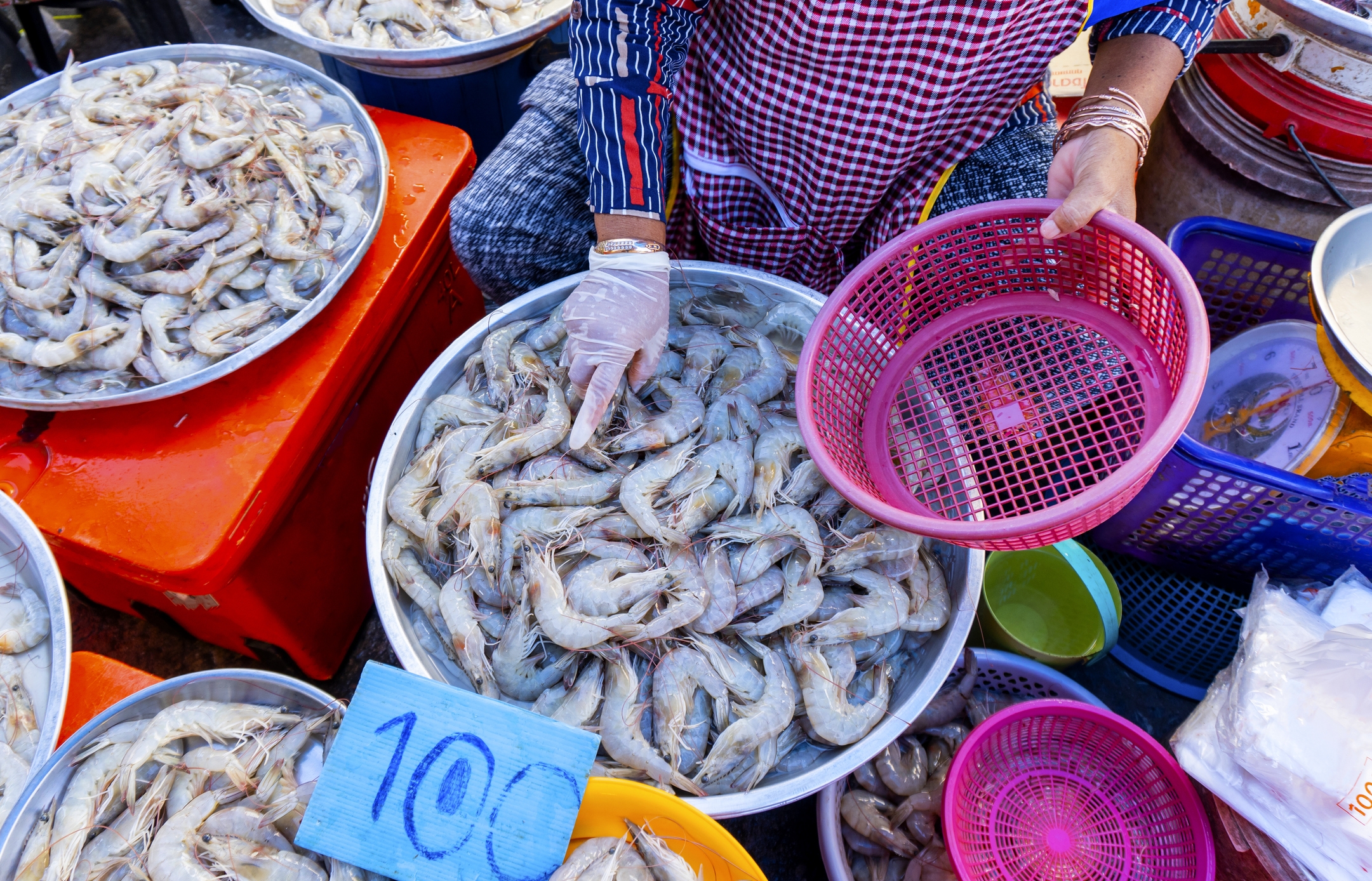Pacific White Shrimp
Whiteleg shrimp, commonly known as Pacific white shrimp or king prawn, belongs to the species Litopenaeus vannamei. Originating from the eastern Pacific Ocean, this shrimp has become a predominant species in global aquaculture due to its fast growth and resilience. Its mild taste and firm texture make it a favourite in many culinary dishes worldwide.

More on Pacific White Shrimp
About
Whiteleg shrimp are characterized by their light-coloured legs and a relatively clear or slightly bluish-greenish body. These shrimp can grow up to 230 millimetres in length, but the average harvested size is between 100-150 millimetres. They thrive in tropical conditions, naturally inhabiting coastal areas from Mexico down to northern Peru. Their popularity in aquaculture has been driven by several factors: they have a rapid growth rate, show a high survival rate in farms, and are less susceptible to certain diseases that affect other shrimp species. This adaptability has led to their cultivation in various regions beyond their native habitat, including off the coast of British Columbia - and right here on the prairies of Alberta!
History
Originally found in the eastern Pacific, the whiteleg shrimp's journey from wild-caught species to aquaculture superstar is noteworthy. As global demand for shrimp grew, aquaculture presented a sustainable way to meet this need without depleting natural populations. Introduced to Asian shrimp farms in the 1970s and 1980s as an alternative to the native tiger prawn, whiteleg shrimp quickly dominated due to its advantageous farming characteristics. Today, it's the most cultivated shrimp species globally.
Ways To Cook
Whiteleg shrimp's delicate and slightly sweet flavour makes it a versatile ingredient in various dishes. It can be boiled, grilled, fried, or steamed. A simple preparation involves seasoning with salt and pepper, then pan-searing in butter or olive oil until they turn a pinkish-orange colour. Grilling the shrimp with a touch of lemon and garlic provides a smoky and tangy flavour profile. In Asian cuisines, they're often stir-fried with vegetables, tossed in rich sauces, or included in soups like tom yum. Given their mild taste, they absorb flavours well, making them ideal for marination. Regardless of the method, it's essential to avoid overcooking as shrimp can quickly become rubbery.
Some Of Our Favourite Videos
Alberta Shrimp Producers
Waterford Farms
About this producerFoods from this producer:
